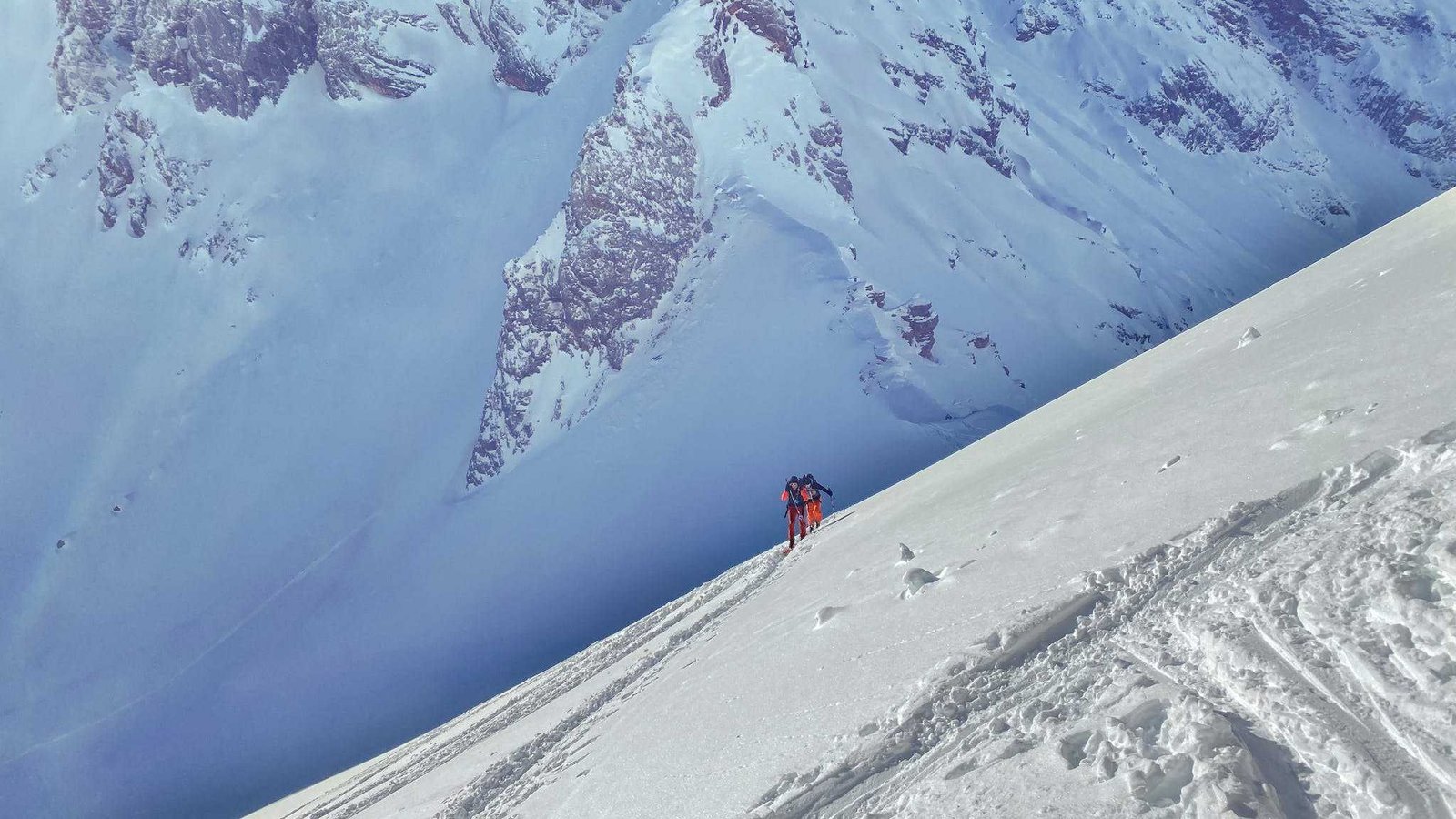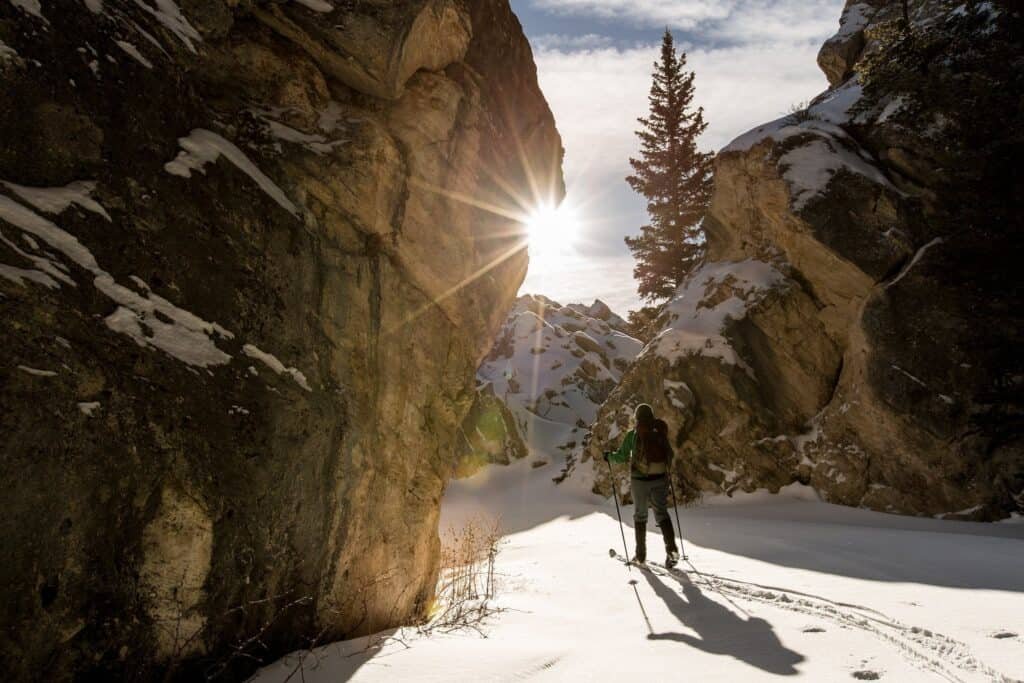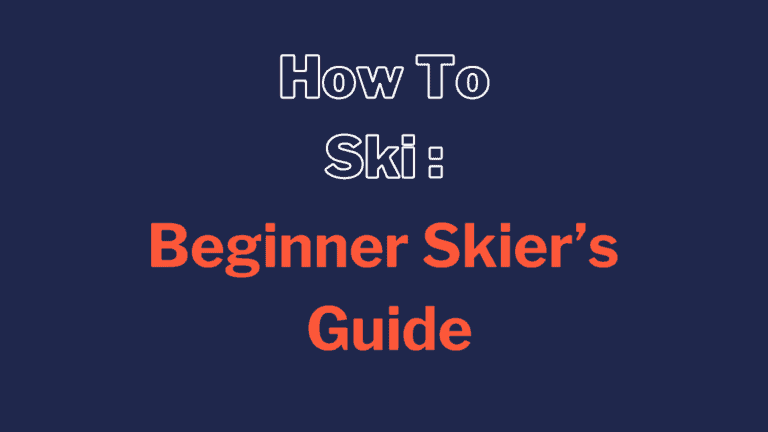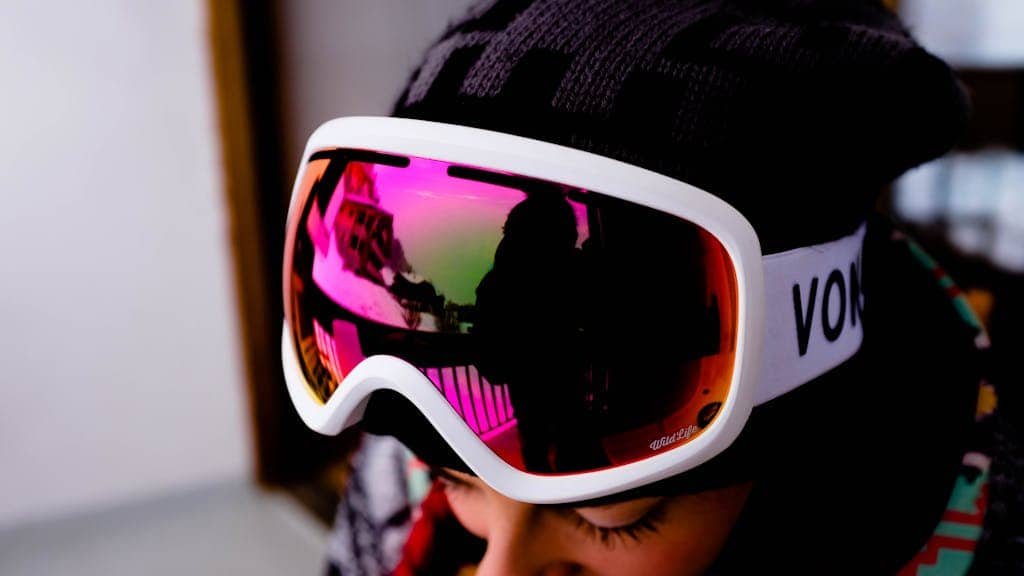How to Choose Alpine Touring Skis: A Comprehensive Guide

Alpine Touring Skis (AT skis) or Backcountry Skiing represents the pinnacle of freedom and adventure for winter sports enthusiasts. This exhilarating form of skiing combines the ascent of mountaineering with the thrill of downhill skiing, offering an escape into pristine, snow-covered landscapes far from crowded ski resorts.
Three key factors should guide your decision in choosing Alpine Touring Skis: the terrain you’ll be skiing on, the style of skiing you prefer, and your skiing technique. Once you sorted this out, you can now evaluate better what ski size, weight, length, and shape suits you best. Read my article about what is ski touring about to gain a deeper understanding of this skiing type.
Key Takeaways
What Terrain Do You Ski?

When choosing the right skis for your backcountry adventures, the terrain you plan to tackle is a primary consideration. Whether you’re gliding over hardpack snow or cutting through light, fluffy powder, the terrain dictates the most suitable width, shape, and weight of your skis.
Skiing Hardpack Snow
- Preferred Ski Characteristics: For hardpack snow, you’ll benefit from skis with a narrower width, typically less than 90mm. This design offers better edge grip and precision, crucial for handling compacted, icy conditions.
- Shape and Weight: A traditional camber profile is advantageous here, as it maintains more edge contact with the snow, providing stability and control. Skis for hardpack are often heavier, aiding in stability at higher speeds and smoother rides on firm surfaces.
Skiing Light, Fluffy Snow
- Preferred Ski Characteristics: In deep, powdery snow, wider skis, usually over 100mm, are ideal. They provide better flotation, keeping you atop the snow rather than sinking in, which is essential for maintaining speed and maneuverability in powder.
- Shape and Weight: Rocker profiles, especially at the tips, are beneficial for powder skiing. They prevent the tips from diving into the snow and make turning in deep snow easier. While these skis tend to be lighter for maneuverability, their width adds surface area, aiding in flotation.
Skiing Variable Conditions
- Preferred Ski Characteristics: If you’re skiing a mix of terrains, from groomed trails to off-piste areas, you need versatile skis. Mid-range width, around 90-100mm, can offer a good balance, suitable for both powder and groomed runs.
- Shape and Weight: A hybrid profile, combining camber and rocker, is ideal for variable conditions. The camber underfoot ensures edge grip and stability on the hardpack, while the rocker tips improve flotation and ease of turning in powder. The weight of these skis is often balanced to handle different snow types without overly taxing during ascents.
What Type of Skiing Do You Do?

Uphill vs. Downhill Focus
- Uphill Focus: If your primary goal is efficient ascent, lightweight skis are paramount. These skis often feature advanced materials like carbon fiber to reduce weight without sacrificing strength. They are typically narrower to ease movement through uphill terrains and facilitate better kick turns. However, lighter skis may compromise on stability and performance during descents.
- Downhill Focus: Skiers who prioritize downhill performance should look for slightly heavier skis that offer stability and power in various snow conditions. These skis are often wider, providing better flotation in deep snow and stability at higher speeds. They can handle aggressive turns and absorb impacts better but may add to the effort required during ascents.
Differences in Skis for Specific Uses
- Alpine Touring Skis: These are the all-rounders, balancing uphill efficiency with downhill capability. They come in various widths and profiles to cater to different preferences and conditions.
- Mixed Backcountry and Resort Use: For skiers who alternate between backcountry and resort skiing, versatile skis that offer a good mix of lightness for climbing and sturdiness for resort runs are ideal. These skis are generally mid-weight with a moderate width.
- Racing and Ski Mountaineering: In racing or ski mountaineering, where speed and endurance are key, the lightest and narrowest skis are preferred. They facilitate rapid ascents and long-distance traverses but may require skillful handling on descents.
- Ski Mountaineering: These skis are designed for technical ascents and challenging descents. They often have a narrower profile for precision on steep, technical terrain and are built tough to withstand rugged conditions.
How Will You Ski?

Aggressiveness and Speed
If you’re an aggressive skier who loves speed, you’ll likely prefer skis that are stiffer and perhaps longer. These characteristics offer better stability at high speeds and more precision in carving turns. They’re designed to handle the demands of aggressive downhill skiing, ensuring that you can push your limits with confidence.
Skiing Technique
Your technique also plays a pivotal role. Are you into making short, quick turns or do you prefer long, sweeping ones? Skiers who enjoy playful, short turns might find shorter and more maneuverable skis advantageous. In contrast, if your style leans towards long, fast turns, then longer skis might be the better choice, as they provide more stability and edge hold.
Terrain Adaptability
How you ski also ties in with the terrain you prefer. If you enjoy tackling varied backcountry terrain, including steep chutes and deep powder, you might opt for skis with a wider waist and rockered tips for better flotation. On the other hand, if you’re a fan of groomed trails or hardpack snow, narrower skis with a traditional camber will offer the grip and precision you need.
Endurance and Stamina
Lastly, consider your endurance and stamina. If you’re planning on long tours, lighter skis can be a boon, reducing fatigue and making the uphill journey more manageable. However, remember that lighter skis might not perform as well on the downhill as heavier, more robust models.
Alpine Touring Skis Selection Factors
Ski Length
Based on your height, here are some general recommendations for ski length. Remember, these are guidelines, and personal preference and skiing style should also be considered:
| Skier Height (Feet & Inches) | Skier Height (cm) | Suggested Ski Lengths (cm) |
|---|---|---|
| 4’4″ | 132 | 115-130 |
| 4’6″ | 137 | 125-140 |
| 4’8″ | 142 | 130-145 |
| 4’10” | 147 | 135-150 |
| 5’0″ | 152 | 135-155 |
| 5’2″ | 158 | 145-165 |
| 5’4″ | 163 | 150-170 |
| 5’6″ | 168 | 155-175 |
| 5’8″ | 173 | 160-180 |
| 5’10” | 178 | 165-185 |
| 6’0″ | 183 | 170-190 |
| 6’2″ | 188 | 175-195 |
| 6’4″ | 193 | 180-200 |

Ski Waist Width
Width is a fundamental aspect when choosing skis, directly impacting their performance in various snow conditions.
- Narrow Width (70-90mm): Ideal for ski mountaineering and firm snow conditions. These skis are agile and light, making ascents easier. They suit skiers who prioritize uphill efficiency and maneuverability on compact snow.
- Medium Width (90-115mm): Versatile for mixed snow types, offering a balance between flotation in powder and performance on groomed trails. These skis cater to skiers seeking all-around capability.
- Wide Skis (115mm+): Designed for deep powder, providing superior flotation. They’re best for skiers who frequently tackle soft, deep snow and prioritize downhill performance in off-piste conditions.
Ski Shape
Shape influences how a ski interacts with different types of terrain and snow.
- Traditional Shape: Characterized by a uniform width from tip to tail, offering consistent behavior and stability. Ideal for groomed runs and consistent snow.
- Tapered Shape: The tip and/or tail width reduces from the widest point of the ski. This design helps in maneuverability, particularly in soft or variable snow conditions, as it reduces the likelihood of the ski tips catching in the snow.
Ski Profile
Profile refers to the curvature of the ski along its length, affecting how the ski engages with the snow.
Camber
- Definition: Camber is the traditional ski profile where the middle of the ski arches up slightly off the snow when the ski is unweighted. When you put weight on it, the entire edge contacts the snow, offering a more even distribution of pressure.
- Benefits:
- Edge Grip: Excellent for hard-packed snow or icy conditions. The even pressure distribution enhances edge grip, making turns more precise.
- Energy Transfer: Offers better energy transfer and pop. This is beneficial when skiing aggressively or carving turns.
- Stability: Generally provides better stability at high speeds.
- Limitations:
- Powder Performance: Not ideal for deep powder. The ski’s tip can easily dive under the snow, making it harder to navigate.
Rocker
- Definition: Also known as reverse camber, this ski profile curves up at the ends, resembling a banana shape. It lifts the tips and tails off the snow.
- Benefits:
- Powder Performance: Excellent in deep snow. The raised tips float better on powder, making it easier to initiate turns.
- Maneuverability: More forgiving and easier to pivot, which is beneficial in tight spaces or uneven terrain.
- Versatility: Good for varied conditions. They adapt well to both groomed trails and off-piste adventures.
- Limitations:
- Edge Grip: Less effective on hard snow or ice due to reduced edge contact.
- Stability: At high speeds, especially on hardpack, they might feel less stable.
Hybrid Designs
Many modern skis combine both rocker and camber elements, offering a balance of features. For example, a ski might have a cambered midsection for grip and stability, with rockered tips for better powder performance.
Choosing for Alpine Touring
- Terrain and Snow Conditions: Consider where you’ll be skiing most often. For mixed conditions, a hybrid design might be best. If you’re frequently in deep powder, a rockered profile is advantageous.
- Skill Level and Style: Cambered skis demand more precision and skill, suitable for experienced skiers who enjoy carving and speed. Rockered skis are more forgiving and suit a variety of skill levels.
- Personal Preference: Ultimately, your comfort and confidence on the skis matter most. Trying different profiles can help you understand what works best for your style.
Ski Materials
1. Core Materials
- Wood: The most traditional and common core material. It offers excellent resilience and responsiveness. Different types of wood (like poplar, ash, or maple) provide varying degrees of flex and weight. Wood cores are favored for their ability to absorb vibrations and provide a smooth ride.
- Foam: Foam cores are lighter than wood and are often used in entry-level or very lightweight skis. They are less durable and have a different flex pattern, often feeling softer. They are favored in weight-sensitive applications like long tours but might lack the performance characteristics of wood in terms of energy transfer and stability.
2. Laminates and Reinforcements
- Carbon Fiber: Widely used for its strength-to-weight ratio. Carbon fiber adds stiffness and stability to the ski without much weight. It’s ideal for skiers who want performance-oriented skis that are still light enough for long ascents.
- Fiberglass: A common material used in conjunction with a wood core. It adds stiffness and durability without significantly increasing the weight.
- Titanal (Aluminum Alloy): Often used in high-performance skis for its damping properties. It adds weight but provides a smoother ride, especially at high speeds or on hard snow. Not as common in pure touring skis due to the weight penalty.
- Kevlar/Aramid: Sometimes used in high-end skis for its vibration-absorbing qualities. It can make the ski more stable and less prone to chatter at speed.
3. Sidewalls and Topsheets
- ABS Sidewalls: Provide good edge grip and stability. They can add some weight but are beneficial for performance-oriented skis.
- Cap Construction: Lighter than sidewall construction and often found in more budget-friendly or lightweight models. Offers a different flex and durability profile.
4. Impact on Performance and Weight
- Weight Considerations: For AT skiing, where uphill efficiency is key, weight is a critical factor. Lighter materials like foam cores or carbon fiber reinforcements are popular. However, the lightest skis might not offer the best downhill performance.
- Performance Dynamics: Materials like wood cores and titanate layers improve downhill performance. They provide stability, edge grip, and vibration damping, which are essential for aggressive skiing or challenging snow conditions.
- Balancing Act: The challenge for ski manufacturers is to balance weight with performance. High-performance materials that are too heavy can impede uphill efficiency, while ultra-light materials might compromise on stability and durability.
Ski Tips and Tails
The design of the tips and tails of Alpine Touring (AT) skis plays a crucial role in skin attachment, a key aspect for efficient and effective uphill travel in backcountry skiing. Here’s a brief overview:
Importance of Tip and Tail Design for Skin Attachment
- Secure Attachment: The tip and tail design must ensure that skins attach securely to the ski. This prevents the skins from peeling off during ascent, which can be frustrating and even dangerous in certain terrains.
- Ease of Use: Efficient designs allow for quick and easy attachment or removal of skins. This is especially important in cold or harsh conditions where handling can be more challenging.
Ski Designs Facilitating Easy and Secure Skin Attachment
- Notched Tips and Tails: Some skis come with notches at the tips and/or tails. These notches provide a specific point where the skin’s loop or hook can securely attach, ensuring the skin stays in place throughout the ascent.
- Tip and Tail Clips: Skins are often designed with clips or hooks that secure the ski’s tip and tail. Ski designs that accommodate these clips with a flat or slightly indented area ensure a better grip and more secure attachment.
- Tail Straps: Adjustable tail straps on skins can adapt to various ski designs. Skis with a slightly raised or flat tail section provide an ideal surface for these straps to grip securely.
- Tip Shapes: Skis with a wider, rounded tip are often easier for skin attachment, as they provide a larger surface area for the skin’s tip loop to grasp. This is especially helpful in deep snow conditions where handling might be cumbersome.
- Integrated Skin Systems: Some modern AT skis come with integrated skin systems. These systems often involve a custom skin that perfectly fits the ski’s dimensions and attaches via a specialized mechanism, ensuring optimal compatibility and security.
Prioritize safety in backcountry skiing by obtaining avalanche education and always carrying essential gear like a beacon, probe, and shovel. Check avalanche forecasts, never ski alone, and meticulously plan your route. Regularly inspect your equipment, dress for variable weather, and remain informed about snow conditions. Respect wildlife, stick to designated areas, and acknowledge your skiing abilities and physical limits. Lastly, bring communication devices, especially in remote areas with no cell service. These steps are crucial for a safe and enjoyable backcountry experience.
Here are some resources for avalanche safety information:
Northwest Avalanche Center
Avalanche Org
Avalanche Resource and Education
Conclusion
Choosing the right Alpine Touring Skis is an essential step toward ensuring both your safety and enjoyment in the backcountry. By taking into account your height, weight, preferred terrain, skiing style, and the specific conditions you expect to encounter, you can select skis that will enhance your performance and match your backcountry aspirations. Remember, the skis are not just a tool but a companion in your alpine adventures, one that should complement your abilities and ambitions.
So take the time to make an informed decision, and you’ll find that with the right pair of skis underfoot, the mountains are yours to explore with confidence and exhilaration. Whether you’re carving through untouched powder or ascending rugged peaks, the perfect pair of AT Skis will make every turn and every trek more rewarding.






